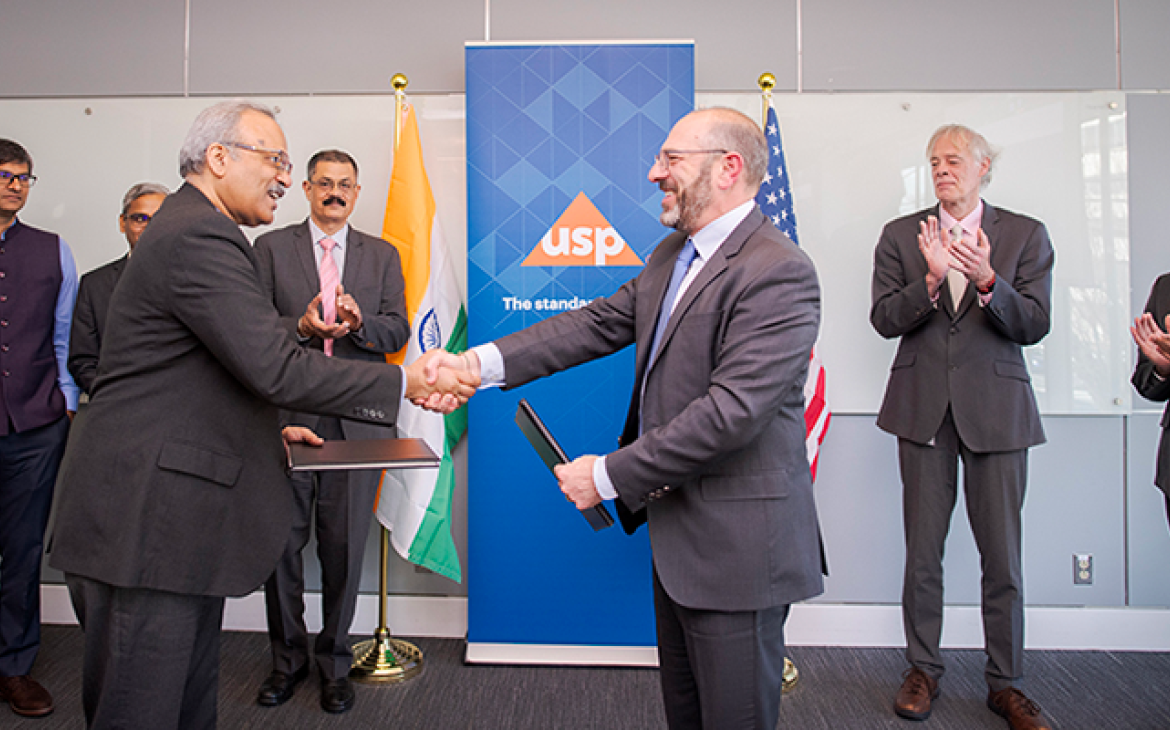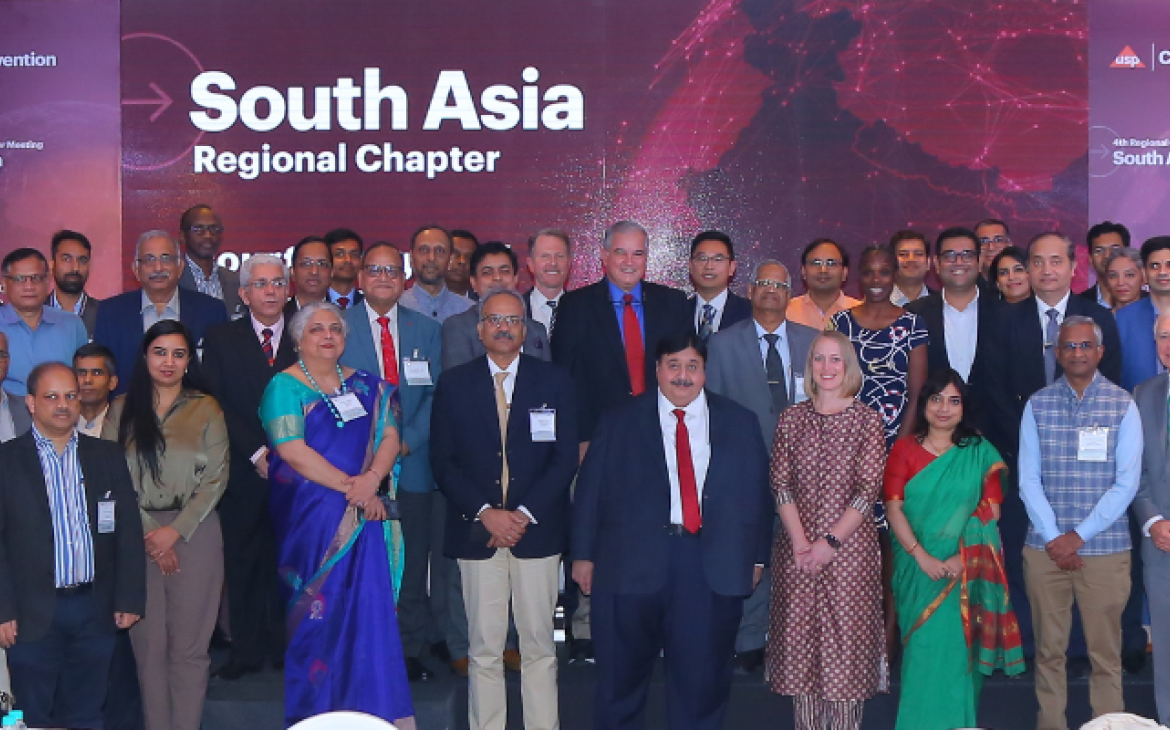
USP was founded nearly 200 years ago by eleven doctors who wanted to ensure that the nation had access to quality medicines. They put together the first pharmacopeia, a book of recipes for making tinctures, extracts, and other medicines. Then, in the mid-1800s, analytical chemistry evolved to enable quality testing. Fundamentally, medicine quality is concerned with the identity, strength, purity, and performance of a product or ingredient (i.e., What is it? How much of it is there? Is there anything else present? How does it become bioavailable to enable it to have the expected clinical outcome?) Over time, new technologies have arisen to help us improve the way we assess the quality of medicines. The department I head at USP, Research and Innovation (R&I), is tasked with continuing this work of exploring emerging technologies and trends which could impact medicine quality and considering how USP might address these. Our work can be thought of as early research, significantly upstream of USP’s regular, public standard setting process.
I had the pleasure of discussing some of the emerging technologies we are exploring and their potential implications on quality standards at the second annual CPhI North America conference in Philadelphia, an event that brought together more than 7,400 people throughout the entire pharmaceutical supply chain. Our discussion focused on R&I’s main goals: to explore new technologies that could impact the pharmaceutical industry in the next 5 – 10 years, and assess potential implications on quality of medicines.
The Research & Innovation Lifecycle
Like any research function, we use a multi-stage funnel to assess what emerging technologies we should focus on. The input to the funnel is a continuous “horizon scan” of emerging trends and technologies. A sub-set of these enters the next phase, the Proof of Concept (PoC) stage, where we spend weeks to months to deepen our understanding of the technologies and preliminarily assess their potential impact on the industry and USP.
Based on the PoCs, we select a subset of technologies to enter the next stage – Incubation. Here we’ll spend significantly more time, potentially a couple of years diving deep into the technologies and determining if and when USP should build expertise around them. Ultimately, some technologies are “adopted” by USP, which means that investments are made to scale-up the necessary capabilities, and to initiate our usual, public standard-setting process.
I would like to share a few examples of what we’re currently working on:
Stage: Proof of Concept
Technology: 3-D printing of finished dosage forms
3-D printing (3DP) is a technology that could conceivably be used in different ways to create a finished dosage form. For example, it could be used in the mass production of a pill with special physical characteristics, or it could be used to make customized pills that combine all of the medicines that a specific patient needs in just the right dosage for them.
In the first case, 3DP is essentially used as a manufacturing tool, with all of the usual quality aspects that entails, such as following Good Manufacturing Practices (GMP). In the second case, the use of 3DP is akin to compounding, with all of the usual quality questions that entails, such as avoiding cross-contamination between medicines for different patients. From our perspective, 3DP used as a manufacturing tool is very different from 3DP used in compounding, and different approaches might be needed to address any potential quality issues around these technologies. However, there may also be some common needs between these applications (e.g., proper cleaning of the printer between runs).
Stage: Incubation
Technology: Quantitative Nuclear Magnetic Resonance (qNMR)
NMR has been around since the 1950s, but recent advances have enabled a shift towards affordable desktop machines. In addition to the typical approach of assigning identity, new algorithms may allow these machines to also assess the strength and purity of a sample.
We are therefore exploring qNMR for several potential uses. For example, it may be appropriate to use qNMR internally at USP as one of the techniques used to assess the quality of pharmaceutical materials used in the creation of reference standards. Secondly, we’re exploring qNMR as a potential compendial analytical technique. However, we first need to understand the implications of introducing a new technique into our monographs on industry. Is the technology widely adopted by industry? Will it disrupt the industry? These and other questions are the focus of our qNMR incubation project.
Stage: Organizational adoption
Technology: Pharmaceutical Continuous Manufacturing
Pharmaceutical manufacturing is typically done as a batch process – this often results in multiple starts and stops in the production process. Intermediate (work in progress) materials may be stored for some time, and sometimes are shipped to other facilities. Eventually, the final step of the process is reached and the finished product is tested to decide whether to release the batch to the marketplace.
Continuous manufacturing changes all that. Medicines are produced in a single, continuous process that runs all the way through to the production of the finished product without interruption or intermediary steps. Quality is assessed in-line as the product is being made in a validated process.
Regulations around continuous manufacturing are being developed by the FDA and industry is increasingly adopting the approach due to its advantages. As this adoption accelerates, we need to make sure that our physical and documentary standards are ready and are in place, which is why we are making a significant investment in building a Continuous Manufacturing team and working to partner with academic, industry, and other leaders in this space.
As technologies evolve, USP has to evolve with them. R&I’s goal is to explore the appropriate technologies of the day to support quality medicines. In doing so, we continue to help build the foundation for a healthier world. Visit our Research & Innovation page to view our progress.
If you are interested in volunteering your expertise to help us establish standards that make it possible for two billion people around the world to have access to quality medicines, please visit www.callforcandidates.usp.org.


